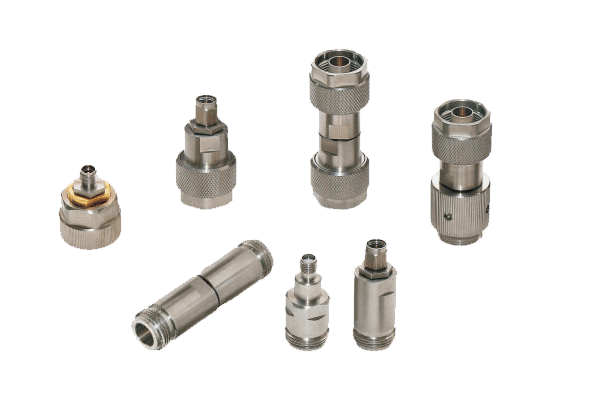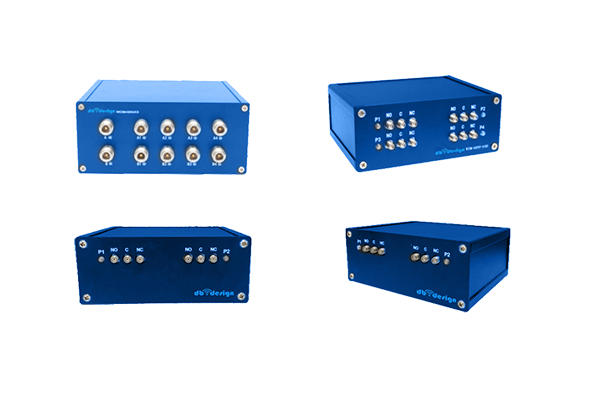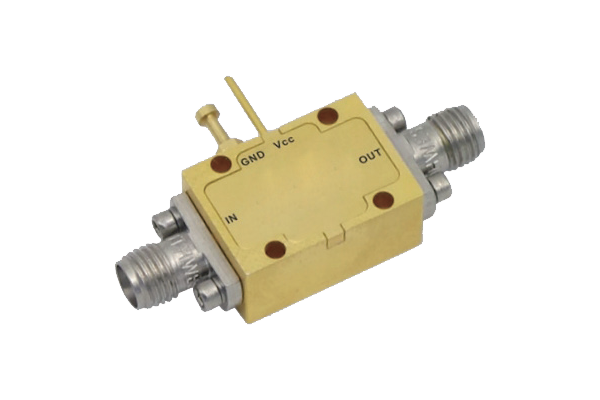
Pin diodes are established as major constituents in high-frequency electronics due to their natural device characteristics Their rapid transition between on and off states together with minimal capacitance and low insertion loss suits them for switching modulation and attenuation roles. The primary process that governs PIN diode switching is the modulation of current by varying the applied bias. Applying bias shifts the depletion-region extent within the p–n junction and so modifies conductivity. Setting different bias levels allows PIN diodes to perform high-frequency switching with minimal distortion
Where timing precision and control matters PIN diodes get implemented into high-level circuit systems They are implemented in RF filtering schemes to enable selective frequency band passage or blockage. Their capability to tolerate high-power signals allows deployment in amplifiers power dividers and generator equipment. Smaller, more efficient PIN diodes have expanded their application scope in wireless communications and radar technologies
Study of Coaxial Switch Performance
Coaxial switch development is multifaceted and calls for precise management of several parameters Switch performance is influenced by factors like the switch type operating frequency and insertion loss characteristics. Designs should focus on cutting insertion loss and increasing isolation to improve switch performance
Performance analysis requires evaluating key metrics such as return loss insertion loss and isolation. Metrics are assessed using simulation tools theoretical modeling and laboratory measurements. Rigorous performance analysis is necessary to secure dependable coaxial switch operation
- Simulations combined with analytic methods and practical experiments are standard for coaxial switch evaluation
- Temperature fluctuations impedance mismatch and manufacturing inconsistencies can strongly alter switch performance
- New advances trends and innovations in coaxial switch engineering aim to enhance performance metrics while cutting size and power consumption
Optimizing LNA Designs for Performance
Improving LNA performance efficiency and gain is key to maintaining high signal fidelity across applications This requires careful selection of transistors bias conditions and circuit topology. Well engineered LNA circuits reduce noise influence and increase amplification while controlling distortion. Design evaluation relies heavily on simulation and modeling tools to measure noise effects of various choices. The objective is achieving a low Noise Figure which measures the amplifier’s ability to preserve signal strength while suppressing internal noise
- Opting for transistors with small inherent noise is a vital design decision
- Properly set optimal and appropriate biasing reduces transistor noise generation
- The configuration and topology substantially shape the amplifier’s noise response
Techniques of matching networks noise cancellation and feedback control contribute to improved LNA operation
Pin Diode Switch Based Signal Routing

Pin diode switches provide a versatile and efficient approach for routing RF signals across applications Such semiconductor switches toggle quickly between states to permit dynamic control of signal routes. Low insertion loss combined with excellent isolation is a primary advantage that reduces signal degradation. Common uses encompass antenna selection duplexers and phased array implementations
The switching behavior is governed by voltage driven modulation of the diode’s resistance. When off or deactivated the diode exhibits high resistance effectively blocking RF energy. When a positive control voltage is applied the diode resistance decreases reduces or falls allowing RF signals to pass
- Additionally PIN diode switches present fast switching low energy use and compact dimensions
Various PIN diode network configurations and architectural designs can achieve advanced signal routing functions. Strategic interconnection of many switches yields configurable switching matrices for versatile path routing
Measuring the Performance of Coaxial Microwave Switches

Rigorous evaluation and testing of coaxial microwave switches are key to confirming dependable operation in electronics. A range of factors like insertion reflection transmission loss isolation switching rate and bandwidth affect switch performance. Detailed evaluation requires measuring these parameters across a range of operating and environmental test conditions
- Furthermore moreover additionally the evaluation should consider reliability robustness and durability plus the ability to tolerate harsh environmental stresses
- The end result of a solid evaluation produces essential valuable and critical data to support selection design and improvement of switches for defined applications
In-depth Review of Noise Suppression in LNA Circuits
LNAs are indispensable in wireless RF communication systems because they raise weak signals while suppressing noise. The paper provides a comprehensive examination analysis and overview of techniques aimed at lowering noise in LNAs. We explore investigate and discuss key noise sources including thermal shot and flicker noise. We further analyze noise matching feedback topologies and bias optimization strategies to suppress noise. This review spotlights recent developments like new materials and inventive circuit designs that improve noise figures. By providing insight into noise minimization principles and practices the review supports researchers and engineers working on high performance RF systems
PIN Diode Applications in High Speed Switches

PIN diodes possess remarkable unique and exceptional traits that fit them well for high speed switching systems Reduced capacitance and low resistance yield fast switching performance suitable for strict timing control. Additionally PIN diodes show a linear adaptive response to voltage facilitating accurate amplitude modulation and switching behavior. The combination of adaptability versatility and flexibility makes them suitable applicable and appropriate across many high speed applications They find use in optical communications microwave circuitries and signal processing devices and equipment
Coaxial Switch Integration with IC Switching Technology
Coaxial switch integrated circuits deliver improved signal routing processing and handling within electronic systems circuits and devices. Such integrated circuits are built to control manage and direct signal flow over coaxial lines while delivering high frequency performance and low propagation or insertion latency. Miniaturization through IC integration results in compact efficient reliable and robust designs fit for dense interfacing integration and connectivity scenarios
- By rigorously meticulously and carefully implementing these techniques practitioners can achieve LNAs with remarkable noise performance for sensitive reliable electronics With careful meticulous and rigorous execution of these strategies designers can obtain LNAs exhibiting excellent noise performance for sensitive reliable systems With careful meticulous and rigorous execution of these strategies designers can obtain LNAs exhibiting excellent noise performance for sensitive reliable systems By carefully meticulously low-noise amplifier and rigorously applying these approaches designers can realize LNAs with outstanding noise performance enabling sensitive reliable electronic systems
- Deployment areas span telecommunications data communications and wireless networking environments
- Coaxial switch IC implementations support aerospace defense and industrial automation applications
- Consumer electronics audio visual equipment and test and measurement systems are typical domains
Design Considerations for LNAs at mmWave Frequencies

Millimeter wave LNA design must address elevated signal attenuation and stronger effects of intrinsic noise. Parasitic capacitances and inductances become major factors at mmWave demanding careful layout and parts selection. Ensuring low input mismatch and strong power gain is critical essential and important for LNA operation at mmWave. Choosing appropriate active devices like HEMTs GaAs MESFETs or InP HBTs is key to achieving low noise at mmWave bands. Further the design implementation and optimization of matching networks remains vital to achieve efficient power transfer and proper impedance matching. Consideration of package parasitics is required because they may adversely impact LNA performance at mmWave. Using low loss transmission lines and thoughtful ground plane designs is essential necessary and important for minimizing reflection and keeping high bandwidth
Characterization Modeling Approaches for PIN Diodes in RF Switching
PIN diodes perform as significant components elements and parts across various RF switching applications. Exact detailed and accurate characterization of these devices is essential for the design development and optimization of reliable high performance circuits. That entails analyzing evaluating and examining electrical voltage and current characteristics such as resistance impedance and conductance. Frequency response bandwidth tuning traits and switching speed latency response time are part of the characterization
Moreover furthermore additionally developing accurate models simulations and representations for PIN diodes is vital essential and crucial for predicting behavior in complex RF systems. Different numerous and various modeling strategies are available including lumped element distributed element and SPICE models. The selection of an apt model simulation or representation relies on particular application requirements and the expected required desired accuracy
Advanced Cutting Edge Sophisticated Techniques for Low Noise Quiet Minimal Noise Amplifier Design
Designing LNAs is a crucial task requiring careful attention to circuit topology and component selection to reach optimal noise performance. Recent emerging and novel semiconductor progress has enabled innovative groundbreaking sophisticated design approaches that reduce noise markedly.
Representative methods consist of using implementing and utilizing wideband matching networks selecting low-noise transistors with high intrinsic gain and optimizing biasing schemes strategies or approaches. Moreover additionally furthermore sophisticated packaging and thermal control solutions significantly help reduce noise contributions from outside sources. By carefully meticulously and rigorously applying these approaches designers can realize LNAs with outstanding noise performance enabling sensitive reliable electronic systems
